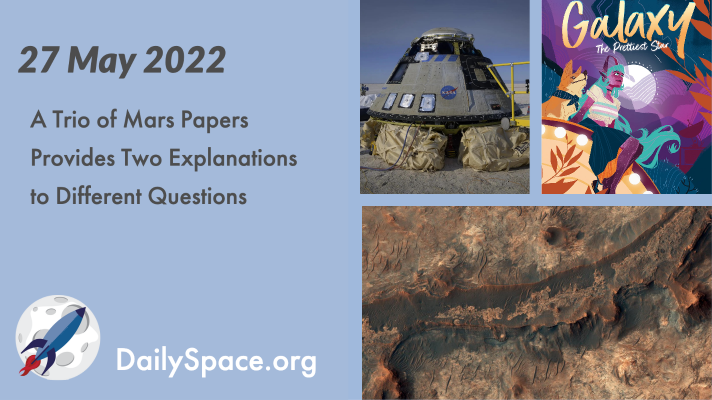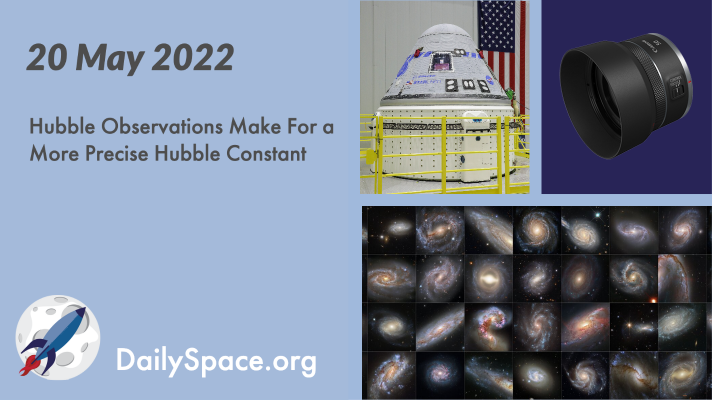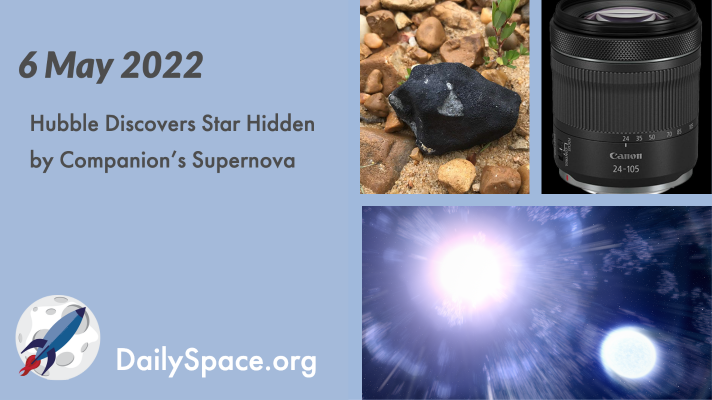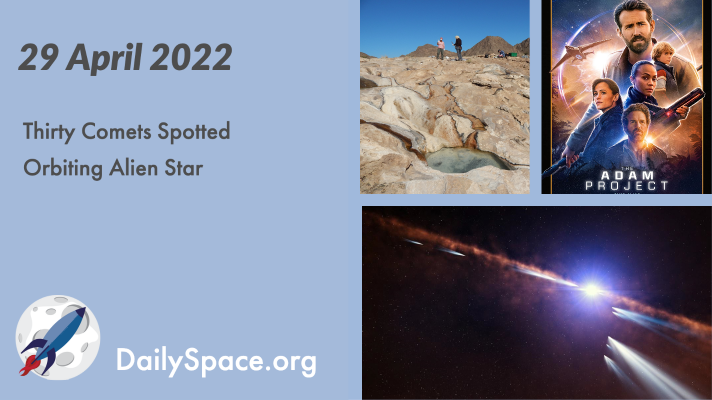
May 31, 2022 | Crewed Space, Daily Space, Earth, ESA, Mars, Perseverance, Review, Rockets, The Sun
Today, we take a look at three recent papers attempting to explain various phenomena on Mars. One uncovers the cause of discrete aurorae. Another explains the martian haze. And a third actually ends up with more questions than answers. Plus, Boeing’s OFT-2 returns to Earth, ESA’s Solar Orbiter makes its closest approach, and Dr. Pamela reviews the new graphic novel “Galaxy: The Prettiest Star” by Jadzia Axelrod.

May 21, 2022 | Crewed Space, Daily Space, Galaxies, Mars, Review, Rockets, Rovers, Spacecraft, Stars, Supernovae
Over the past three decades, astronomers around the world have been using the observations of the Hubble Space Telescope to more precisely calculate the expansion of the universe. And they have converged on a precision of just over 1%. Plus, Boeing launches Starliner, Voyager 1 struggles, and Erik reviews his favorite camera lens.

May 16, 2022 | Astrobiology, Daily Space, Earth, Exoplanets, Kepler, Mars, Moon, Review, Supermassive Black Holes, Supernovae, Zhurong
Using a mere twelve grams of lunar soil returned by the Apollo missions, scientists have successfully grown plants in the lab. With a wealth of genetic data on hand, they can now analyze the changes to the plants and the soil. Plus, stellar cannibalism, a black hole merger, brown dwarfs, water on Mars, and a review of “Star Trek: Strange New Worlds”.

May 9, 2022 | Asteroids, Crewed Space, Daily Space, Exoplanets, Moon, Review, SpaceX, Stars, Supernovae, Titan
Data from the Hubble Space Telescope has determined that the newly discovered companion of a star that went supernova had its outer hydrogen layer siphoned off before the explosion. The results support the theory that massive stars generally form and evolve as binary systems. Plus, rocks from space, Crew-4 comes home, searching for life beyond Earth, and another Canon lens review.

May 2, 2022 | Asteroids, Astrobiology, Comets, Daily Space, Earth, Exoplanets, JWST, Moon, Our Solar System, Review, Rockets, Space China
Using data from TESS, a new paper presents evidence for the discovery of thirty potential comets orbiting in the Beta Pictoris system. Plus, astrobiology research, water on the Moon, solar system formation, and a review of “The Adam Project” starring Ryan Reynolds.

Apr 18, 2022 | Book Club, Climate Change, Daily Space, Earth, Review, Stars, Supernovae
An analysis of the relative movements of 18 tectonic ridges over the past 19 million years finds that the rate of seafloor spreading has dropped by about 40% on average globally. Plus, stars are getting naked, climate change is heating things up, and we review “Impact: How Rocks from Space Led to Life, Culture, and Donkey Kong” by Greg Brennecka.








 We record most shows live, on Twitch. Follow us today to get alerts when we go live.
We record most shows live, on Twitch. Follow us today to get alerts when we go live.